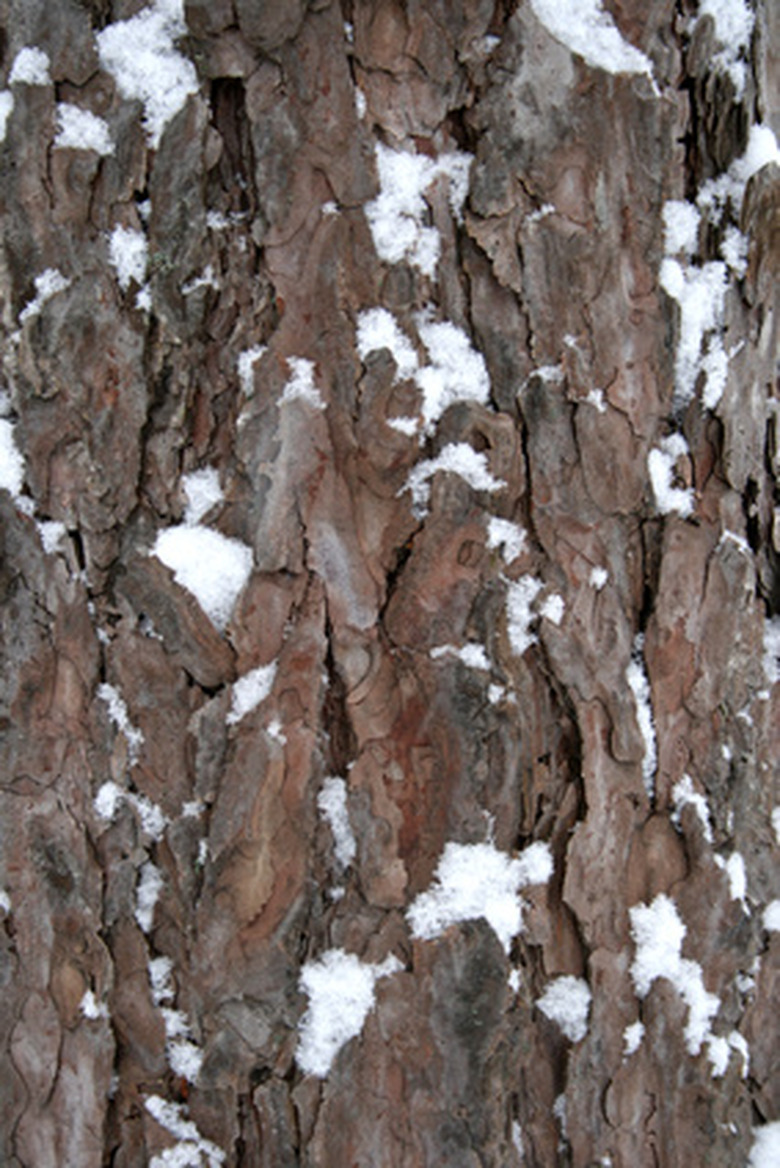What Climates Do Pine Trees Need To Grow?
Pine trees grow nearly everywhere in North America, with Kansas being the sole region in which no pine trees are native species, according to the "National Audubon Society Field Guide to Trees: Eastern Region." With such a large range, the pine trees obviously handle a variety of climates, though certain species prefer specific climates in which to grow.
USDA Zone 2
Few pine trees grow where it is as cold as U.S. Department of Agriculture plant hardiness zone 2, where winter temperatures sometimes reach 50 below zero F. The Scotch pine is one, growing to 60 feet in full sunshine. Able to withstand the effects of wind, Scotch pine cannot grow in a hot climate such as is typical of the Deep South. Another cold weather pine for zone 2 is the red pine, a type thriving where summers remain cool and winters become cold. Red pine's attractive, colorful bark includes shades of red, orange and silver, giving the tree ornamental worth.
USDA Zone 4
Japanese red pine, limber pine, Austrian pine and the Swiss stone pine all grow in zones as chilly as USDA zone 4, where winters occasionally surprise with readings of 30 below zero F. However, these species cannot grow where it gets any colder than that. The eastern white pine is a great fit within zone 4, as it handles even colder climates, growing to zone 3. Eastern white pine tolerates humid conditions in the summer months. Cultivars of this pine include Hillside Winter Gold and Fastigiata.
- Pine trees grow nearly everywhere in North America, with Kansas being the sole region in which no pine trees are native species, according to the "National Audubon Society Field Guide to Trees: Eastern Region." Japanese red pine, limber pine, Austrian pine and the Swiss stone pine all grow in zones as chilly as USDA zone 4, where winters occasionally surprise with readings of 30 below zero F. However, these species cannot grow where it gets any colder than that.
USDA Zone 6
USDA zone 6 is the zone where cities such as St. Louis, Missouri, occur, with winters much milder than zones such as 2 and 4. Pine trees suitable for the climates of zone 6 include some that also tolerate much colder places, like the jack pine. The Jeffrey pine grows in zone 6. It is a West Coast pine more tolerant of the cooler summers of its native region than the potentially hot ones found in eastern parts of the zone. Its large size, up to well over 100 feet, makes it a tree suitable for wide-open spaces. The Japanese black pine is an Asian pine tolerant of coastal conditions, meaning it withstands exposure to salt spray.
USDA Zone 9
Freezing temperatures are a rare occurrence within USDA zone 9, which includes cities such as Houston, Texas. Pines for zone 9 climatic conditions include the short-leaf pine, a tree that when in its growing stages makes a workable privacy screen. The loblolly pine handles damp, low sites and the species needs the humid, hot climate found in zone 9 to grow to potential. The stone pine, of Mediterranean origin, grows in zone 9, but it does best where summers are relatively cool, such as the California coastal areas where temperatures through the seasons stay uniform.
- USDA zone 6 is the zone where cities such as St. Louis, Missouri, occur, with winters much milder than zones such as 2 and 4.
- The stone pine, of Mediterranean origin, grows in zone 9, but it does best where summers are relatively cool, such as the California coastal areas where temperatures through the seasons stay uniform.
